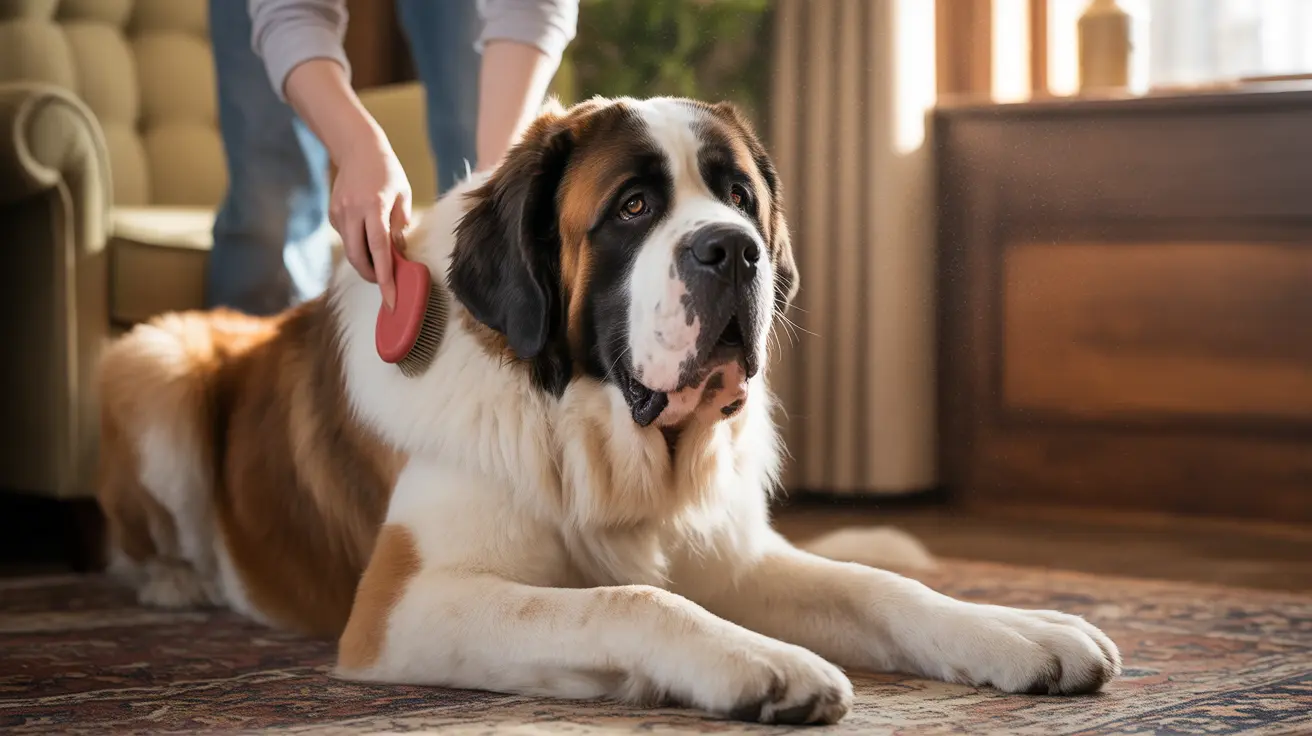Understanding English Mastiff Coat Types
English Mastiffs possess a distinctive double coat consisting of a shorter, coarse outer layer and a softer, dense undercoat. This coat structure serves an important purpose, helping to regulate their body temperature throughout the year while providing protection from the elements.
Their coat typically comes in various colors, including fawn, apricot, and brindle, always featuring their characteristic dark facial mask. The texture and density of their coat contribute directly to their shedding patterns.
Seasonal Shedding Patterns
While English Mastiffs shed consistently throughout the year, they experience two major shedding seasons annually - typically during spring and fall. During these periods, they "blow" their undercoat, resulting in increased hair loss as their bodies prepare for seasonal temperature changes.
Spring shedding helps them shed their heavy winter coat, while fall shedding prepares them for growing a thicker winter coat. During these times, owners should expect to step up their grooming routine to manage the increased hair fall effectively.
Essential Grooming Tips for Mastiff Owners
Regular grooming is crucial for managing your English Mastiff's shedding. A consistent grooming routine should include:
- Weekly brushing (increasing to daily during heavy shedding seasons)
- Regular bathing every 2-3 months
- Daily cleaning of facial wrinkles
- Weekly ear cleaning
- Regular nail trimming
Using the right tools makes a significant difference in managing shedding. Consider investing in:
- Rubber curry brushes for regular maintenance
- Deshedding tools for seasonal coat blowing
- Grooming mitts for sensitive areas
- High-quality dog shampoo designed for short-coated breeds
Managing Shedding in Your Home
Living with an English Mastiff requires some practical strategies to keep your home clean:
- Vacuum regularly, preferably with a pet-specific vacuum
- Keep lint rollers in multiple locations
- Use washable slipcovers on furniture
- Consider air purifiers to help with loose hair
- Establish designated areas for grooming to contain the mess
Health Considerations and Shedding
Excessive or unusual shedding can sometimes indicate underlying health issues. Watch for:
- Patches of hair loss
- Skin irritation or redness
- Changes in coat texture
- Excessive scratching
- Dull or brittle coat
If you notice any of these symptoms, consult your veterinarian promptly. Proper nutrition, regular veterinary check-ups, and addressing any health issues quickly can help maintain healthy coat condition and normal shedding patterns.
Frequently Asked Questions
Do English Mastiffs shed year-round, and how heavy is their shedding?
Yes, English Mastiffs shed year-round at a moderate level, with heavier shedding during spring and fall when they blow their undercoat. While consistent, their shedding is generally manageable with regular grooming.
What is the best way to manage and reduce shedding in English Mastiffs?
The most effective way to manage shedding is through regular brushing, proper nutrition, and maintaining a consistent grooming schedule. Using appropriate grooming tools and keeping up with seasonal coat changes can significantly reduce loose hair in your home.
How often should I brush my English Mastiff, especially during seasonal shedding?
During normal periods, brush your Mastiff at least once a week. During seasonal shedding (spring and fall), increase brushing to daily sessions to help remove loose undercoat and minimize hair around your home.
Are English Mastiffs hypoallergenic, and can their shedding affect allergy sufferers?
No, English Mastiffs are not hypoallergenic. Their consistent shedding and dander production can affect allergy sufferers, making them potentially challenging for people with pet allergies.
What grooming tools and routine care are recommended to keep an English Mastiff's coat healthy?
Essential tools include a rubber curry brush, deshedding tool, grooming mitt, and high-quality dog shampoo. Regular bathing, brushing, and monitoring skin health are crucial components of maintaining a healthy coat.






